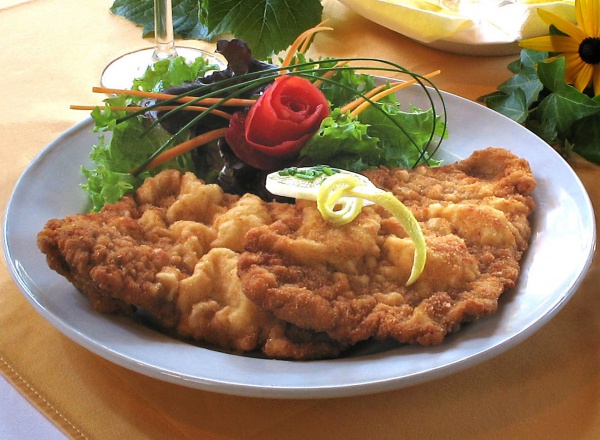Facts About Wiener schnitzel
Wiener Schnitzel, often spelled Wienerschnitzel, is a cherished dish in Viennese cuisine and a national symbol of Austria. This exquisite meal consists of a thin, breaded, and pan-fried veal cutlet, renowned for its crispy and golden exterior. The term "Wiener Schnitzel" first appeared in the 19th century. A widespread but debunked narrative claims that Field Marshal Joseph Radetzky von Radetz brought the recipe from Italy to Vienna in 1857, a tale dismissed by linguist Heinz Dieter Pohl.
To prepare Wiener Schnitzel, you begin by pounding veal slices until they are uniformly thin. Then, you coat them in a sequence of flour, whipped eggs, and bread crumbs before frying them in lard or clarified butter until they achieve a beautiful golden hue. Traditionally, this dish is accompanied by sides such as butterhead lettuce, potato salad, cucumber salad, or parsley potatoes. Variations exist where pork is used instead of veal, referred to as "Wiener Schnitzel vom Schwein" or "Schnitzel Wiener Art."
Similar dishes to Wiener Schnitzel can be found worldwide. These include Surschnitzel, breaded turkey or chicken steaks, cotoletta alla milanese, schnitzel cordon bleu, and Pariser Schnitzel. In America, there is chicken-fried steak. Japan offers its own version called tonkatsu, a fried pork cutlet. In Argentina and Uruguay, a comparable dish is known as milanesa.
In Israel, schnitzel is exceedingly popular and typically made from chicken breast, adhering to kosher laws that prohibit pork. Israeli schnitzel is prepared with oil instead of dairy products and is considered one of the country's "national dishes."

 Poland
Poland